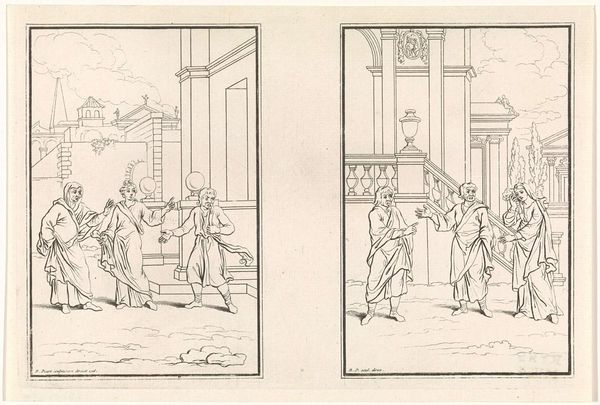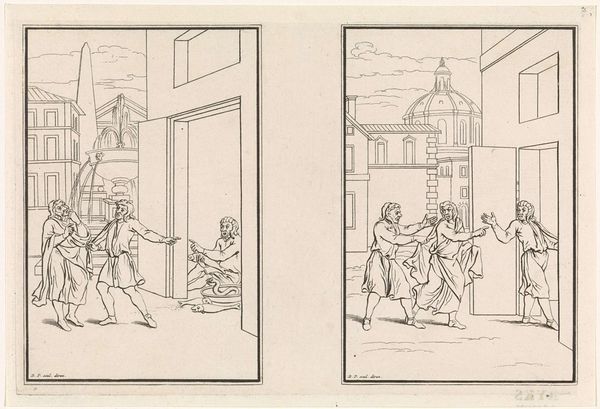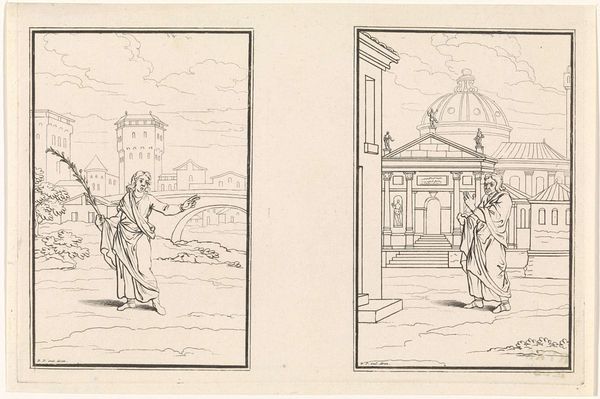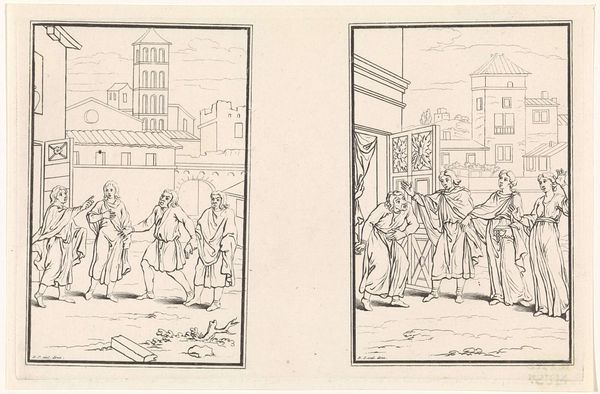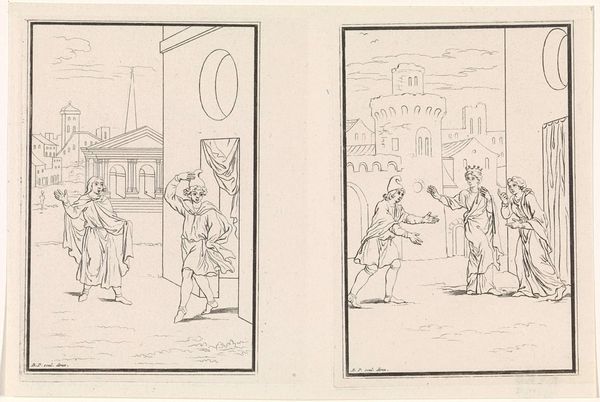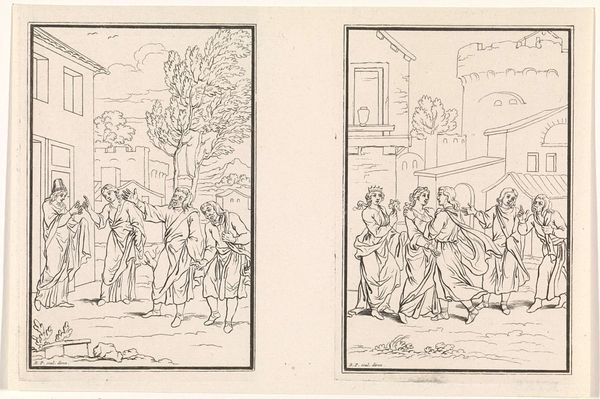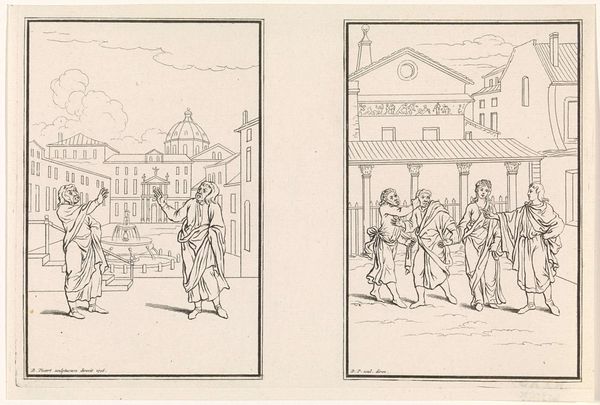
drawing, ink, engraving
#
drawing
#
narrative-art
#
baroque
#
figuration
#
ink
#
history-painting
#
engraving
Dimensions: height 130 mm, width 203 mm
Copyright: Rijks Museum: Open Domain
Curator: Here we have Bernard Picart’s engraving, “Two Scenes from a Comedy by Terentius,” created between 1716 and 1718. Editor: It’s fascinating; the composition feels deliberately separated, yet there's an underlying sense of connection in their almost mirrored states. There is something about how the lines express so much narrative within these vignettes. Curator: Absolutely. Picart, known for his historical and allegorical subjects, gives us a peek into the world of classical theatre and how it was reimagined in the 18th century. This engraving highlights the era’s fascination with antiquity, Terentius, the Roman playwright. This work reflects the ongoing revival of classical drama on the stages and within the intellectual circles of the time. Editor: The buildings towering over each scene - in the one instance almost oppressively present- and in the other forming a manicured backdrop- have a clear symbolism of stability versus staged facade. Curator: I agree. It’s also fascinating how the artist uses architecture to signal the social structures framing each scene. You can almost feel the theatrical tension. One also has to consider the rise of print culture in the 18th century. Engravings like this brought classical stories to a wider audience. Editor: Yes! Look at the costumes. Their garments, reminiscent of ancient Roman dress, carry a theatrical weight; yet, the emotional expressions – panic, supplication, agitation – communicate the human conditions we find in contemporary narratives. Each raised hand, bent posture, speaks volumes. Curator: The graphic lines emphasize the drama, aligning with the performative nature of theatre. The visual language employed is consciously accessible to a public increasingly accustomed to consuming narratives visually, impacting public understanding and participation in art and society. Editor: So, it acts not only as art but also as a medium that disseminated a specific interpretation of history. The themes explored resonate on a personal, domestic level; one that carries collective historical and cultural consciousness about the nature of social hierarchies. Thank you for bringing such rich depth into what I perceived to be stylized scenes. Curator: It has been a pleasure to unpack how the role of the public eye can dictate the making and perception of visual art.
Comments
No comments
Be the first to comment and join the conversation on the ultimate creative platform.





